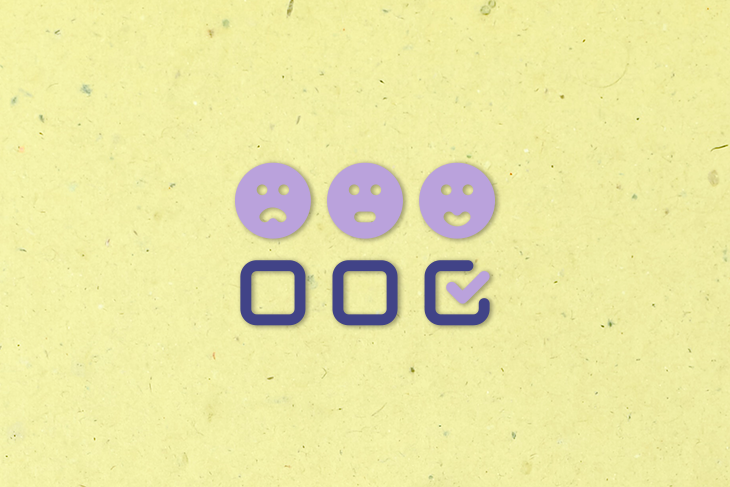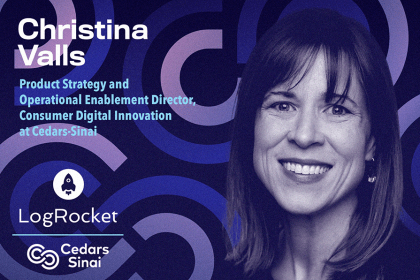In this guide, we’ll break down the many ways product teams gather customer feedback and explain why it’s important to run the resultant data through a continuous feedback loop to generate valuable, actionable insights about your product.

Customer feedback is information users share about their experience interacting with your product.
Feedback is a vital part of product development and, as such, is involved in practically every step. Product managers use customer feedback to determine what users want and then implement product fixes or features accordingly.
But customer feedback is only valuable if you analyze it and then create an action plan. Product feedback loops are essential to ensuring valuable data doesn’t get lost.
Product feedback loops occur when teams collect customer feedback and use the resultant insights to optimize the product experience.
A product feedback loop consists of three stages:
If you skip any of these stages, the feedback loop is broken and rendered essentially pointless.
For example, if you set up a system to collect feedback but then fail to analyze the data, you’ve wasted resources on gathering feedback because you don’t have a loop to ensure insights are gleaned from the data.
Incorporating feedback is a must for product teams. Product feedback loops help you improve customer experience, validate product ideas, and, ultimately, build a better product.
Collecting feedback is crucial, and there are many methods to collect customer feedback. The right option will depend on your goals and what you’re looking to discover about your users.
Product feedback collection methods include:
Surveys are questions you send to your customers or potential customers. Your survey will have a specific goal in mind, such as learning what customers desire or understanding customer satisfaction.
There are many different types of surveys, including:
An NPS survey is usually a one-question survey asking participants to rate their satisfaction level from 1–10. The goal is to determine customer loyalty.
Product managers can use NPS scores to determine who should participate in a referral program or to discover which users have had a poor experience.
Product managers use CSAT surveys to learn about customer satisfaction. An easy way to run this type of survey is to ask customers how they would rate certain product features from “Poor” to “Excellent.”
A product-market fit survey focuses on determining whether your product is a “must-have” among your customers. It only asks one question: How would you feel if you could no longer use the product?
If you have more than 40 percent of respondents saying “Very disappointed,” then you have an in-demand product. If not, you might want to reevaluate your product-market fit.
An easy-to-use product is necessary for a smooth user experience. CES is another short survey designed to help product teams determine whether customers had an easy time using a new feature, customer support interaction, or onboarding process.
Most of these surveys only ask one question, which makes it easy to get quick and focused responses.
You may find yourself wanting more information than a survey can provide. Not all customers are willing to participate in a lengthy online survey, and you can’t ask any follow-up questions.
That’s why many product managers benefit from conducting personal customer interviews or leading focus groups.
You can use customer interviews and focus groups to develop a narrative, validate product ideas, or test new features. The key to generating good customer feedback from these interviews is to avoid asking leading questions.
If you let the conversation flow naturally, you may learn something entirely new about your customers.
Social media is a great tool for tracking real-time sentiments about your product.
People frequently discuss and evaluate products on social media. This presents a great opportunity to get unsolicited feedback from your audience.
You might learn that your customers are having difficulty using a new feature, or maybe your product messaging isn’t resonating with your target audience. Regardless of what you learn, social media can help you keep measuring how your audience feels about your product.
Don’t forget about community forums such as Reddit. This is another place where people share their authentic opinions on your product or your industry in general.
You can also take a look at reviews on places like Trustpilot, G2, or app stores to discover what people love or hate about your product.
Collecting customer feedback can be a cross-functional task, so product managers should consider working closely with customer support teams to collect customer feedback.
Very few people directly interact with clients as much as customer support does. They may notice trends or pain points that the product team should address.
Along with customer support, your sales team can be a valuable source of customer feedback.
Salespeople learn intimate knowledge of the pain points potential customers have in their business. For example, the sales team might be better equipped to learn why potential customers don’t pick a product, what features prompted customers to sign up to use the product, etc.
Last but not least, your product analytics are often a gold mine for discovering what customers do and don’t love about your product.
User behavior provides insights into product performance, user experience, satisfaction, and customer loyalty. Product metrics can help you find the aha moment for a customer or discover what turned them off from using the product further.
Many companies have established processes to gather product feedback, but all too often they neglect to properly analyze the data. Customer feedback tends to collect dust in a document somewhere and go unused by the product team.
The only way to close the product feedback loop is to analyze the data you collect. Below are a few tips on how to analyze customer feedback about your product:
Once feedback is collected, it’s time to start sorting it into categories or themes. You could do this in a spreadsheet or use tools such as Thematic and Productboard to centralize the feedback.
You don’t necessarily want to choose the categories before sorting through the feedback; you want the data to tell you what the categories are, but make sure to eliminate any duplicate themes. And don’t forget to add any sub-themes you may notice.
You may want to consider the demographics and user behavior to better understand customer needs.
You can ask, for example how long a person has been using the product, where they are located, and how much they’ve spent using during their customer lifecycle.
These types of questions can help you see the big picture of what is happening with your users and the value of the feedback they are providing.
You’ll probably end up with a lot of product ideas from your customer feedback, but not all of them are worth building. Some ideas may be in high demand, but they don’t help you create ROI.
You’ll need to prioritize which ideas to build based on their ability to meet overall business goals. Luckily, there are many product feature prioritization frameworks and strategies to help you make a decision.
Not all feedback is great. While you may have many customers providing feedback, you might find that only a small portion of them provide useful feedback.
That’s why it’s crucial to use the following best practices to gather productive feedback and create an efficient product feedback loop:
Many companies gather data because they know it’s a good idea, but they lack any focus on what to do with it. This often leads to a waste of resources.
Before gathering customer feedback, determine the goal. For example, you may want to see how customers are responding to a new feature.
Next, set up a product feedback loop by creating an NPS survey and having it pop up on your website or app after a customer uses a new feature for the first time.
When doing open-ended surveys, customer interviews, or focus groups, the way questions are worded can affect the answers you receive.
Here are a few tips to ensure you get the best and most accurate answers from your customers:
Don’t keep feedback to yourself. It’s important to share it with stakeholders so they can understand the importance of your product roadmap. Sharing customer feedback also helps stakeholders see how your choices are data-driven and understand how they can help the company meet business goals.
It’s also essential to share customer feedback with other team members. They can use it to help leverage insights into their jobs and understand why their tasks and projects are important.
As a product manager, you need to define the processes of creating product feedback loops.
A defined process helps ensure feedback loops stay closed and establishes a continual cycle of gathering feedback, analyzing it, and then building a product from it.
You’ll want to consider the following questions when creating a product feedback loop process:
Without product feedback loops, product teams would miss out on valuable information from their customers — information that’s crucial to making data-driven decisions about their product suite.
It’s not enough to simply set up a system to gather customer feedback. You also need to create a process to analyze the data and then glean actionable insights from it.
By establishing an effective product feedback loop, you can set your team up for the highest possible degree of success as it endeavors to create a desirable and scalable product for your customers.
Featured image source: IconScout
LogRocket identifies friction points in the user experience so you can make informed decisions about product and design changes that must happen to hit your goals.
With LogRocket, you can understand the scope of the issues affecting your product and prioritize the changes that need to be made. LogRocket simplifies workflows by allowing Engineering, Product, UX, and Design teams to work from the same data as you, eliminating any confusion about what needs to be done.
Get your teams on the same page — try LogRocket today.

Michal Ochnicki talks about the importance of ensuring that the ecommerce side of a business is complementary to the whole organization.

Christina Valls shares how her teams have transformed digital experiences at Cedars-Sinai, including building a digital scheduling platform.

Red-teaming reveals how AI fails at scale. Learn to embed adversarial testing into your sprints before your product becomes a headline.

Cory Bishop talks about the role of human-centered design and empathy in Bubble’s no-code AI development product.